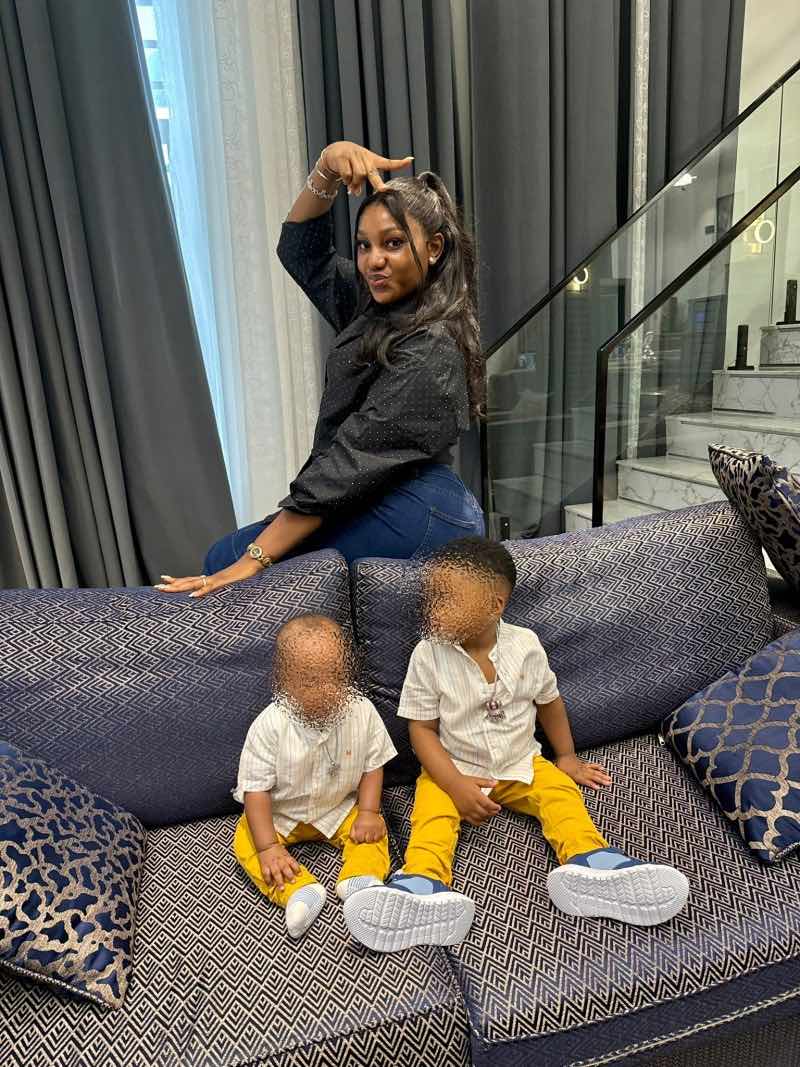A social media storm has erupted around former Big Brother Naija Season 7 contestant Chomzy after she shared what appeared to be an innocent family photo featuring herself with her biological son and stepson. The post, which should have been a celebration of blended family life, instead reignited a complex and emotional debate about custody rights and family dynamics.
The controversy stems from Chomzy’s relationship with her current husband, a situation complicated by his previous marriage and ongoing custody disputes. The reality star’s recent social media post, captioned “Mummy W&J 
The situation highlights the delicate nature of blended families in modern society, particularly when played out in the public eye. Chomzy, who rose to fame through her appearance on Big Brother Naija, has found herself at the center of a heated discussion about the boundaries between stepparents and biological parents, with social media users quick to take sides in the complex family dynamic.
The controversy intensified when a social media user confronted Chomzy about the situation, suggesting that the child should be returned to his biological mother. The comment sparked a passionate response from the reality star, who defended her role in the child’s life. “Your very wicked if you want him to go to someone who doesn’t give a fuvk abt him,” Chomzy responded, adding, “don’t you like that his healthy and handsome? Do you want him to suffer cuz preferred mummy doesn’t want him?”
This exchange opened the floodgates for more public commentary, with critics labeling her a “husband and child snatcher,” while others questioned the ethics of sharing photos of her stepson on social media. The situation has evolved beyond a simple custody dispute into a broader discussion about the responsibilities and limitations of stepparents in sharing their blended family life on social media.
The public reaction to Chomzy’s post reflects the complex emotions and varying perspectives surrounding blended families and custody arrangements. While some social media users have condemned her actions, others have defended her right to celebrate her relationship with her stepson, particularly if she is actively involved in his upbringing.
The controversy has also highlighted the challenges faced by public figures in navigating personal family matters while under intense public scrutiny. As a reality TV star with a significant social media following, Chomzy’s personal life decisions are subject to public commentary and criticism, adding another layer of complexity to an already sensitive situation.
Critics have been particularly vocal about the potential impact of such public displays on the child’s biological mother, with one commenter warning, “WHAT GOES AROUND COMES AROUND,” and suggesting that Chomzy might one day find herself in a similar situation. This sentiment reflects the broader concerns about the long-term emotional implications of custody battles and their public documentation on social media.
The situation raises important questions about the boundaries between public and private life, particularly when it comes to sharing images and information about children involved in custody arrangements. It also highlights the need for sensitivity and discretion when dealing with complex family situations, especially those involving children from previous relationships.
As the debate continues to unfold on social media, it serves as a reminder of the complexities inherent in modern family structures and the challenges faced by those attempting to navigate these sensitive situations in the public eye. The incident has sparked important conversations about co-parenting, stepparent rights, and the role of social media in family disputes.
This ongoing controversy demonstrates how social media can amplify personal family matters into public debates about morality, parenting rights, and the responsibilities of public figures. As the situation continues to develop, it serves as a cautionary tale about the intersection of public life, social media, and complex family dynamics in contemporary society.




